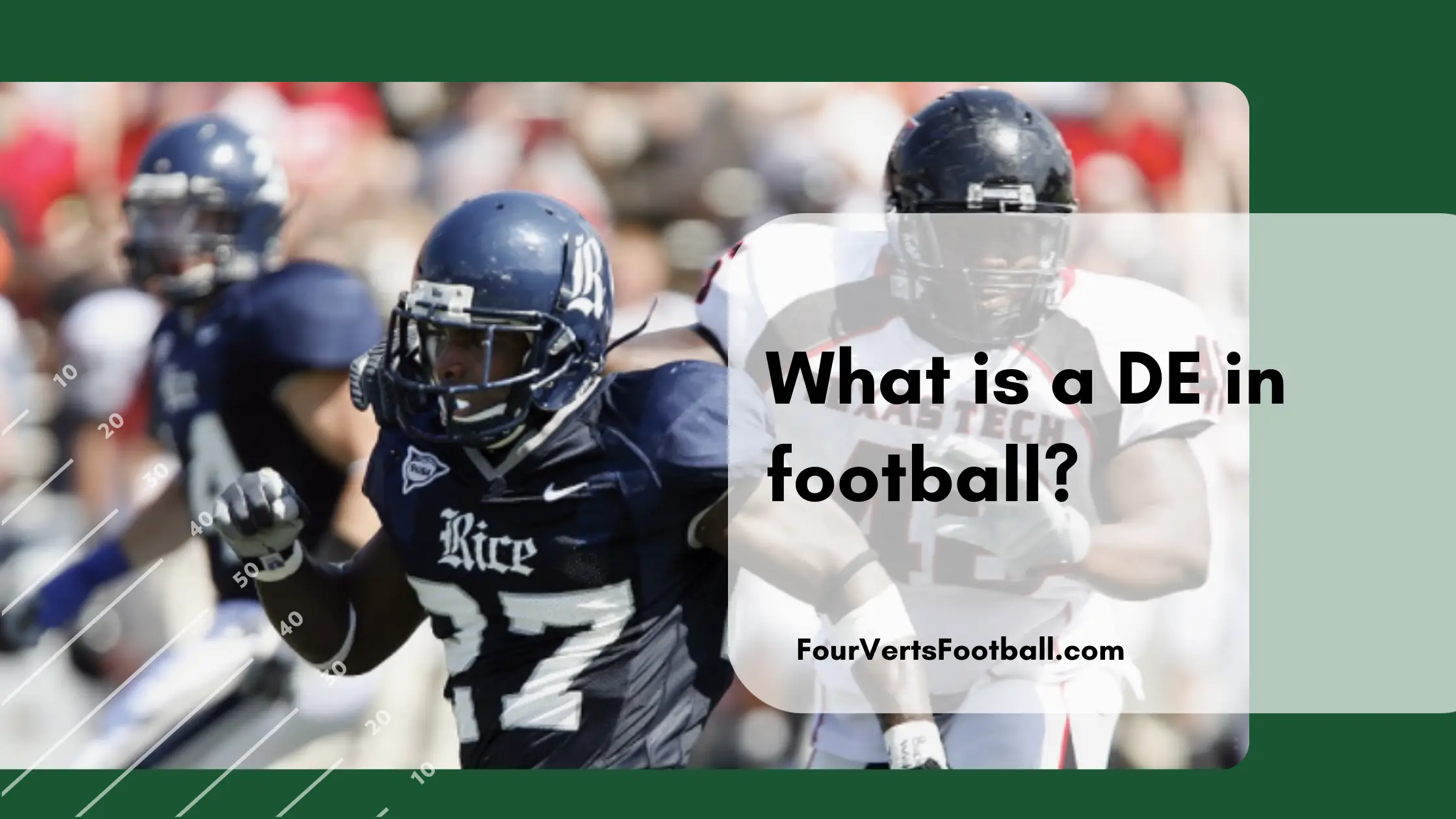The acronym WDE in football refers to the weakside defensive end position. The defensive end lines up at the end of the defensive line and are typically responsible for tackling the quarterback before he is able to throw the ball.
Weakside defensive ends generally take up one position on the defensive line. The WDE is going to line up on the weak side of the formation.
This means the side of the formation that has fewer players. Generally speaking, this is going to be the side that does not have a tight end.
This position is referred to as an end because they line up on the end of the defensive line.
Check out some other position acronyms in our guides to the DE position or the DT position.
What does a WDE do in football?
Now that you understand that a WDE in football is a weakside defensive end you may be wondering what these players do on the field.
Below we are going to break down some of the key on-field responsibilities of the defensive end position.
Rushing The Passer
One of the most important roles of a defensive end in football is to put pressure on the quarterback. On each play the WDE is going to be lined up against the offensive tackle (OT).
WDEs will often have a chance to play against these players one on one which gives them a great opportunity to get to the quarterback.
Reaching the quarterback as a defensive end can be a huge swing for the defense as sacks and forced fumbles are often the outcome.
Most defensive ends will prioritize their ability to rush the passer over any other responsibility of this position.
The ability of a defensive end to shut down an opposing team’s quarterback is largely part of the reason this position is paid so well.
Since these players line up on the weakside of the formation they are going to be more likely to get to the quarterback as they will not have to fight blocks of the tight end.
Containing The Run
On top of putting pressure on the quarterback, WDEs also must contribute in the run defense. Generally, the defensive tackles are going to play more of a role in disrupting the run while defensive ends often look to contain their end of the defensive line.
Containing their end of the line means that the defensive end cannot let the running back get outside of him. Instead, he must funnel him into the middle of the field so that the other defenders can come in for a tackle.
A strong-side defensive end is going to be much more involved in the run game than a weakside defensive end as the ball is typically run towards the strong side.
Filling Passing Lanes
On top of trying to sack the quarterback, the weakside defensive end must also look to contribute in the pass defense in other ways.
If the WDE realizes he is not going to get to the quarterback his next best option is to get his hands in the air to block a pass. By reading the quarterback’s eyes and body language a DE should be able to find out where and when he is going to throw.
The WDE should then try to get his hands up in order to block the passing lane. Batting balls a the line of scrimmage like this can result in incomplete passes and even interceptions.
On some occasions, a defensive end may also be asked to play some zone coverage. This is relatively rare but happens from time to time depending on the type of scheme the defense is running.
That is all on the WDE position in football learn more about football acronyms with our guides to what does hb mean in football or what does fb mean in football.

